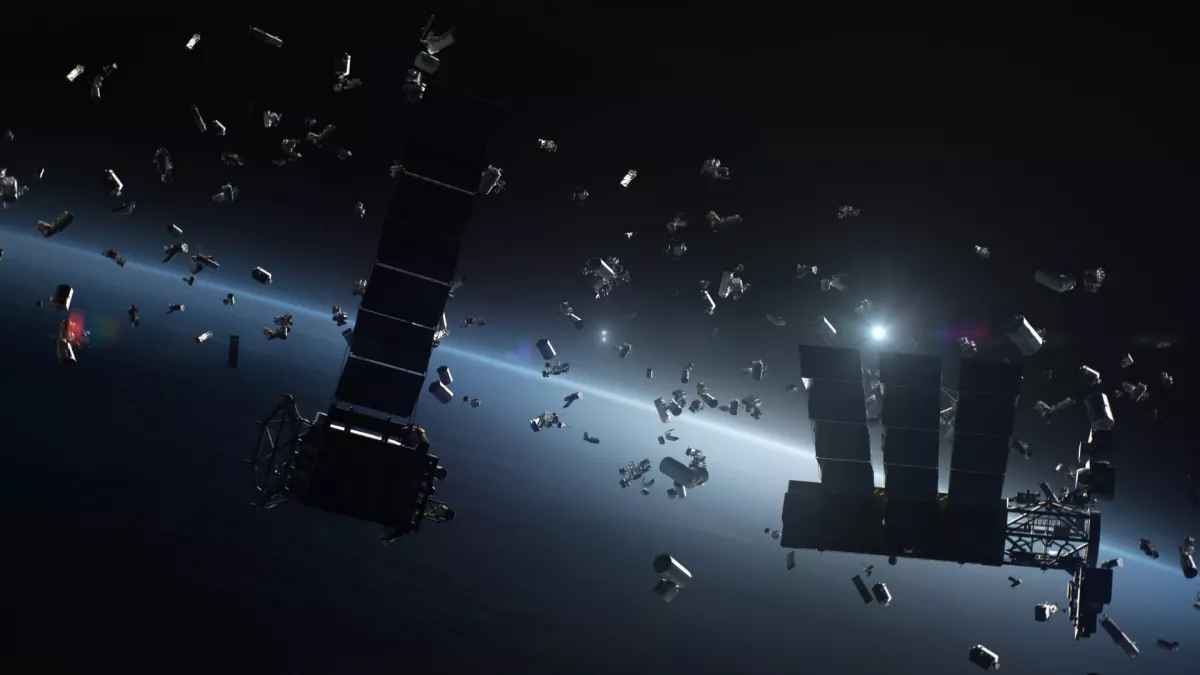Space debris is subtly contaminating Earth
- October 17, 2023
- 0
A new study has revealed that even space debris designed for disposal is polluting the Earth. Burning debris from rockets, space stations, and dead satellites as they enter
A new study has revealed that even space debris designed for disposal is polluting the Earth. Burning debris from rockets, space stations, and dead satellites as they enter

A new study has revealed that even space debris designed for disposal is polluting the Earth. Burning debris from rockets, space stations, and dead satellites as they enter the atmosphere leaves tiny traces of metal in our planet’s atmosphere.
It is currently unknown what impact these scars may have. However, with the increasing pace of space launches, predictions suggest that the number of metal vapors in the stratosphere will also increase. The discovery requires studying the effects of metal vapors on the atmosphere and predicting how this will change over time, according to a research team led by physicist Daniel Murphy of the National Oceanic and Atmospheric Administration (NOAA).

“Currently, the refractory material in stratospheric particles is mainly iron, silicon, and magnesium from a natural meteorite source,” the researchers write in their new paper.
“However, it is predicted that the amount of material obtained by entering the atmosphere of rockets and satellites will increase significantly in the next 10-30 years. As a result, the amount of aluminum in stratospheric sulfuric acid particles is expected to become comparable to or even exceed meteoric iron, resulting in debris and ice nucleation.” It has unknown consequences.”
Although there is plenty of debris in Earth orbit from the early years of the human space age, recent launches have had limited lifespans. The spacecraft, which will eventually deorbit and fall to Earth, was designed using materials that would burn in the upper atmosphere rather than falling to the surface.
However, it is unclear what will happen to the evaporated byproducts of reentry. Murphy and his colleagues wanted to find out whether the vapor from these orbits remained in the stratosphere. They took samples of stratospheric aerosols and analyzed them using the Particle Laser Mass Spectrometry (PALMS) instrument on NASA’s WB-57 high-altitude aircraft.
Aerosols in the stratosphere are mostly sulfuric acid droplets formed as a result of the oxidation of carbonyl sulphide, which occurs both in nature and as an atmospheric pollutant. These drops may contain trace amounts of metal and silicon, obtained from falling into the atmosphere of meteors whose surface evaporates during the fall.
The team analyzed nearly 500,000 individual aerosol droplets, looking for traces of metals used in spacecraft production. They discovered about 20 metals.
Some of these metals were in proportions consistent with meteoric evaporation, but others, such as lithium, aluminum, copper, and lead, exceeded amounts expected from meteoric ablation. The team found that the excess was consistent with the rate expected from spacecraft production.
Other metals they found, such as niobium and hafnium, are common in spacecraft but not so common in meteorites. Overall, the team found that about 10 percent of stratospheric aerosols larger than a certain size were trapped by particles from evaporated spacecraft.
This could have various consequences for the Earth and the atmosphere. The presence of these particles can affect the way water turns into ice in the stratosphere and can affect the size of stratospheric aerosol particles. They can also cause the deposition of salts on aerosol particles and alter the refraction of light in the stratosphere.
These may seem like small changes, but they can lead to unintended consequences, which we really need to investigate, researchers say.
“The space industry has entered a period of rapid growth. With tens of thousands of small satellites planned to be launched into low Earth orbit, this increased mass will be broken down into many new events.”
“Given that 10 percent of stratospheric particles now contain elevated aluminum and that there are many more re-entry events, it is likely that in the next few decades the percentage of stratospheric sulfuric acid particles containing aluminum and other satellite metals will be comparable to the approximately 50 percent currently occurring in meteorites.” contains metals.” Source
Source: Port Altele
As an experienced journalist and author, Mary has been reporting on the latest news and trends for over 5 years. With a passion for uncovering the stories behind the headlines, Mary has earned a reputation as a trusted voice in the world of journalism. Her writing style is insightful, engaging and thought-provoking, as she takes a deep dive into the most pressing issues of our time.